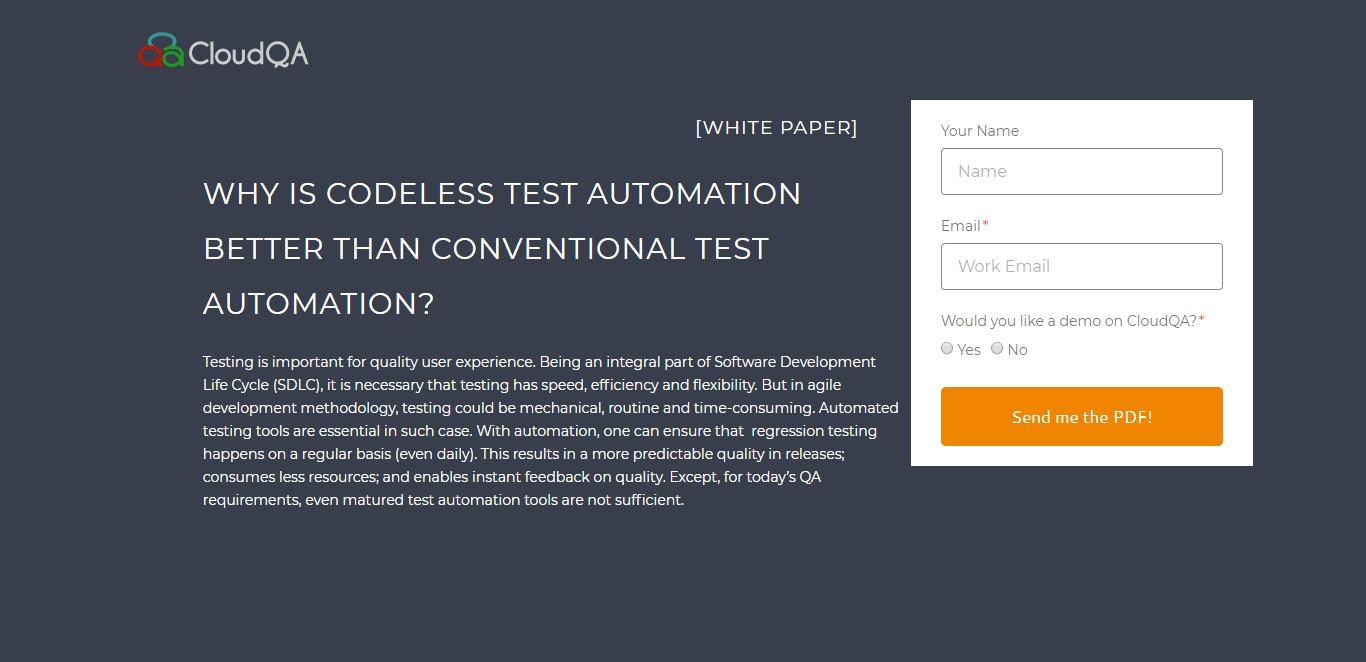The Make-or-Break Role of QA for Startups

Continual innovation, new product offerings, emerging competitors, and rapid expansion mark the fast-paced arena of emerging businesses. In this environment, the importance of Software QA is rarely given the attention it deserves (if any at all). In most cases, procrastination or failing to perform QA activities related to a product’s design may be the root cause of customer cancellation, a prospective business failure. As industry statistics show, the cost of fixing bugs after product release can be more than 30 times higher than addressing them during development. This does only highlight the fact that one tries to avoid the efforts associated with QA, but rather, and more importantly, how critical QA is for the product’s market perception, building trust with customers, and financial viability in the case of startups. This guide seeks to assist with optimized approaches to strategic QA implementation and the automation of its processes to achieve high success rates.
Navigating the QA Minefield: Common Challenges Faced by US SMBs and Startups.
U.S.-based small and medium-sized businesses and their startups face distinctive paths toward delivering sophisticated software solutions. These gaps can cause acute challenges in competing and undermining their business goals.
The tight budgets and scant resources available are an especially troublesome barrier for startups that operate with limited funding and small teams. Investing in QA instrumentation and hiring professionals to manage these tools can be difficult. All purchase decisions around QA are sometimes made under constrained budgets which results in inadequate testing. This calculation is fraught with peril because it does incur expensive bug fixes, damage to reputation, and losses in asset worth over the long term.
In addition, defining the right test strategy tends to be another gray area for a lot of startups. When in the development lifecycle, QA activities should be kicked off from and what the best methodologies to test would be poses a challenge. Startups can easily get stuck with spending valuable time achieving suboptimal results if there is no high-level, adequately documented test strategy in place that addresses all the pragmatic concerns the software has in regards to its quality.
The major challenges faced are:
- Limited Budgets and Resources
- Small Team Sizes and Lack of Expertise
- Rapid Development Cycles and Time Constraints
- Difficulty in Defining the Right Test Strategy
- Managing Changing Requirements in Agile
Why Automation is No Longer a Luxury, But a Necessity.
Perhaps the most striking advantage of automated testing is efficiency. By automating repetitive tasks like regression and functional testing of stable features, startups can reallocate their limited QA resources to more complex and clever tests such as exploratory and usability testing. Automation accomplishes regression tests with far greater speed than human testers, enabling the accomplishment of side-by-side testing in confined windows of time. As a result, companies can maintain a higher level of test coverage without necessitating an increase in the number of QA personnel, considerable time being devoted to manual testing, or simplifying automated processes.
With the growth of startups and the increasing complexity of their products, scalability becomes a major focus area for the QA processes. Adaptation to new frameworks is easily achievable since Automation systems are scalable by nature and can effortlessly deal with added complexity and new features of the software. These frameworks will ensure that all necessary quality assurance checks are performed in tandem with the growth of the product, sustaining optimal quality while avoiding creating delays in the workflow.
Introducing CloudQA: Your Partner in Achieving Quality and Automation.
As the only Testing as a Service (TaaS) provider for US-based small and medium businesses (SMBs) and startups, CloudQA is tailored to their pain points. Understanding the hurdles these businesses confront with maintaining software quality, CloudQA provides a range of offerings that are easy to use, flexible, and incredibly effective. CloudQA’s core value proposition revolves around providing easy-to-integrate and implement high-level QA automation in their business workflow, directly optimizing the software quality and speed at which they launch to market.
Key Features and Benefits of CloudQA for Your Startup.
CloudQA’s platform is well-equipped with key features that directly address the common QA challenges that startups come across on their journey.
| Startup Pain Point | CloudQA Feature | Value Proposition |
| Lack of In-House QA Expertise | No-Code/Low-Code Automation | Enables startups to automate testing without requiring extensive coding knowledge or hiring specialized personnel. |
| Budget Constraints | Cloud-Based Platform | Provides access to enterprise-grade testing capabilities without significant upfront investment in hardware or software. |
| Rapid Development Cycles | Pre-built Test Libraries/Accelerated Test Creation | Allows startups to quickly build and execute tests, keeping pace with their fast-paced development and release schedules. |
| Need for Continuous Testing | Integration with Development Tools | Ensures that testing is an integral part of the development process, leading to early bug detection and higher quality. |
| Difficulty in Measuring Quality | Comprehensive Reporting and Analytics | Provides insights into test results and quality metrics, helping startups make data-driven decisions about their software. |
These aspects provide valuable information regarding test outcomes, quality indicators, and patterns to assist startups in making decisions related to the standards of their software. Having a proper understanding of the testing procedures and how the processes can be improved makes it easier for startups to put their energies efficiently into enhancing the product quality they provide.
Effective Strategies for Building an Effective End-to-End QA Process in Your Startup.
- It is equally important to adopt all agile and continuous testing practices. Immediate problem detection and resolution, when done frequently, helps in avoiding unnecessary expenses as well as project timeline delays. This iterative approach improves the reliability of the final product.
- By strategically shifting the focus during the development phase through relevant automation, startups stand a chance to enhance ROI. Efficiently and effectively allocating resources becomes increasingly simple when time-consuming primary test cases are automated without overwhelming the team.
- Ensuring the best user experience is equally as important. Through usability testing, the software’s ease of use and intuitiveness are guaranteed. Issues that conventional functional checking may lack to address can be captured through actual user feedback.
Finally, having a competent bug-tracking system in place is equally as essential as any other factor. A defined, unambiguous method for reporting, tracking, and setting the priorities for different bugs ensures that the focus is directed where it is most required and keeps processes effective and efficient. Active interaction within the QA and development teams enables high-quality of the product through effective bug management.
The TaaS Advantage: How CloudQA Automates Your Testing Journey.
Just like CloudQA shows, the Testing as a Service (TaaS) model provides an unparalleled benefit to automating QA processes in startups. CloudQA streamlines the entire testing process by offering an all-inclusive platform that takes care of test creation, execution, and upkeep. This liberates startups from the overhead burdens of in-house frameworks and allows them to hone in on their core focus: product development. Due to the ease of access and scalability provided through CloudQA’s TaaS offering, it stands out for those startups with unique needs and growth trajectories. No matter whether a startup is at the stage of launching their very first product or scaling its existing ones, CloudQA offers the tools to eliminate the manual effort required to maintain software quality, infrastructure overhead, and specialized personnel management.
Conclusion: Building a Future of Quality with Automation.
To wrap up, Quality Assurance is extremely important for the success of startups because it affects the software, their reputation, and long-term survival. SMBs and startups based in the US have particular difficulties with implementing effective QA processes related to budget, resources, and fast-developing cycles. However, test automation provides a convenient solution. As a TaaS provider, CloudQA is ready to support startups in building high-quality software with cost-effective, scalable, and efficient automation. Through strategic QA practices along with automation through tools like CloudQA, startups can ensure that quality becomes part of the processes that drive success in the future.
RECENT POSTS
Guides

How To Select a Regression Testing Automation Tool For Web Applications
Regression testing is an essential component in a web application development cycle. However, it’s often a time-consuming and tedious task in the QA process.

Switching from Manual to Automated QA Testing
Do you or your team currently test manually and trying to break into test automation? In this article, we outline how can small QA teams make transition from manual to codeless testing to full fledged automated testing.

Why you can’t ignore test planning in agile?
An agile development process seems too dynamic to have a test plan. Most organisations with agile, specially startups, don’t take the documented approach for testing. So, are they losing on something?

Challenges of testing Single Page Applications with Selenium
Single-page web applications are popular for their ability to improve the user experience. Except, test automation for Single-page apps can be difficult and time-consuming. We’ll discuss how you can have a steady quality control without burning time and effort.

Why is Codeless Test Automation better than Conventional Test Automation?
Testing is important for quality user experience. Being an integral part of Software Development Life Cycle (SDLC), it is necessary that testing has speed, efficiency and flexibility. But in agile development methodology, testing could be mechanical, routine and time-consuming.






